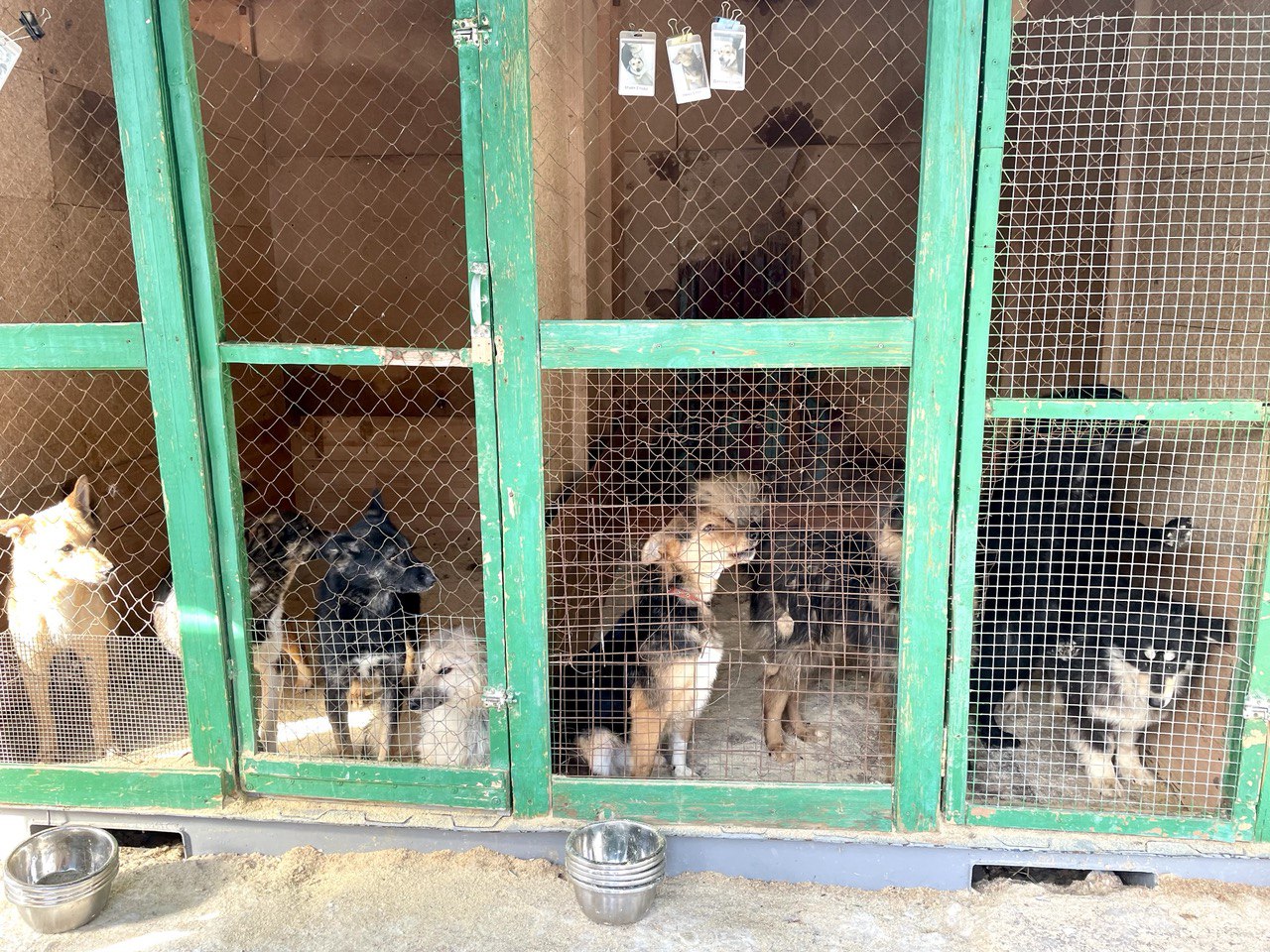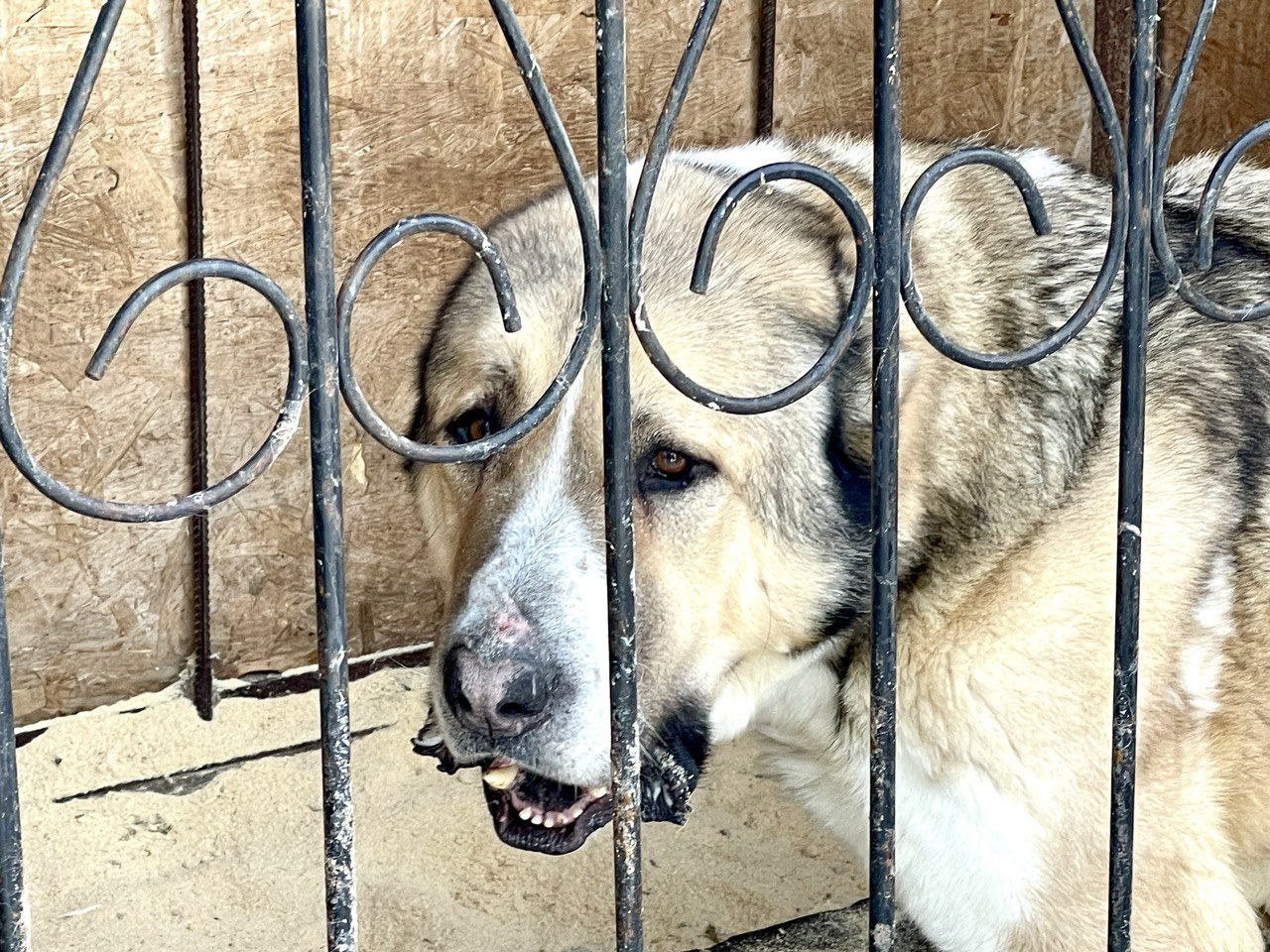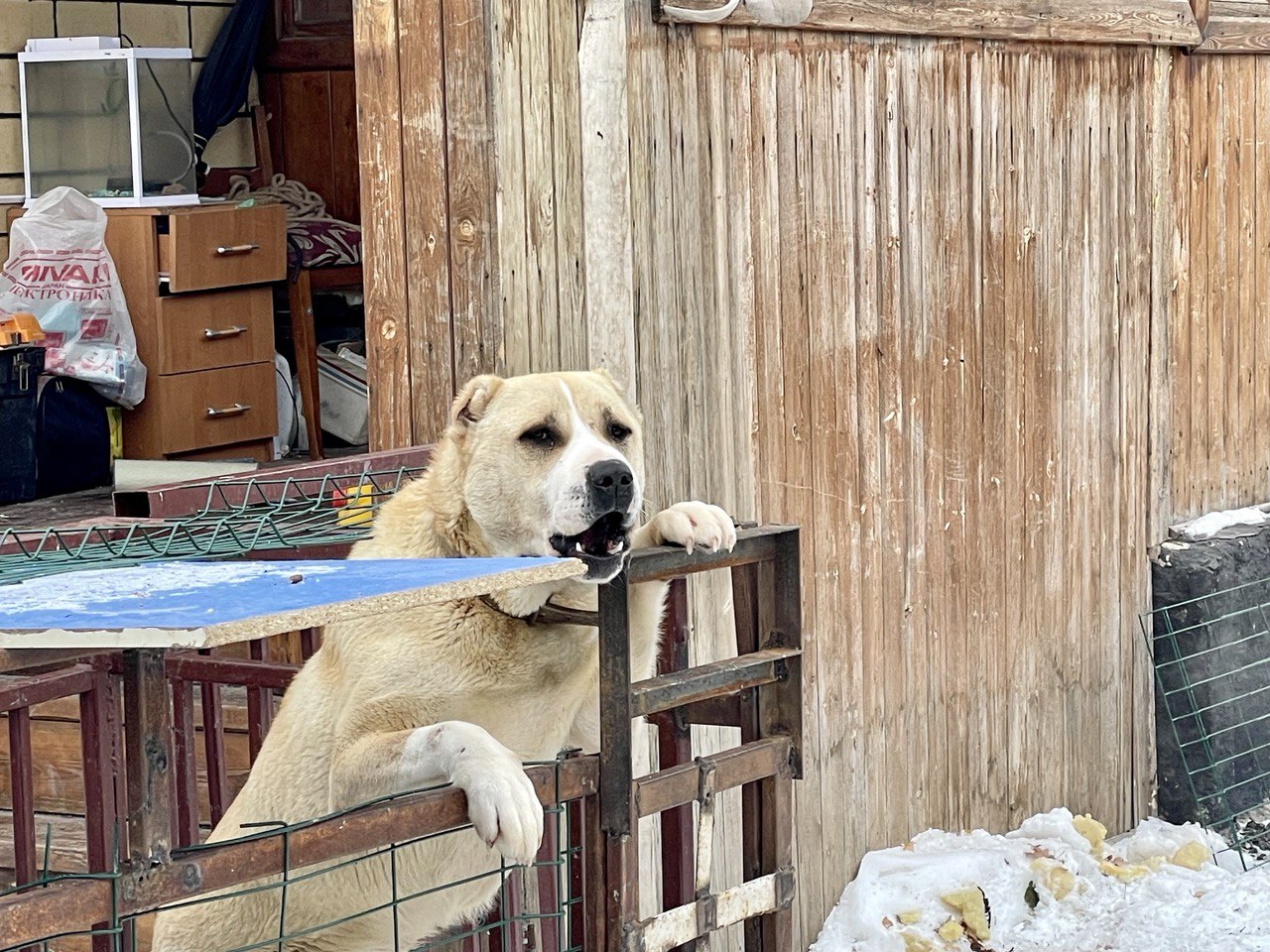ASTANA – In the heart of Astana, there is an animal shelter that has been working tirelessly for the past four years to save and care for stray animals. Founded by Yelizaveta Lipisey, the shelter, called I am Alive, has become a safe haven for animals who have nowhere else to go.

Most of the animals in the shelter are found on the streets. Photo credit: Assel Satubaldina
A Sunday afternoon in the shelter, located on the outskirts of the city, was filled with joy and compassion. People were slowly arriving to join the celebration of the shelter’s four-year anniversary, a significant milestone as animal protection became a frequent topic on the national agenda, exactly one year since a law on the responsible treatment of animals came into force.
The celebration coincided with a Maslenitsa holiday, a traditional Slavic holiday celebrated during the last week before the start of Lent, a fasting period before Easter in the Russian Orthodox Church.

Akku, senior cat zootechnician at the shelter. Photo credit: I am Alive Instagram account
Guests were offered pancakes, pies, and other nutritional snacks with tea from a samovar, a traditional metal container widely used in Kazakhstan, a country with strong tea-drinking traditions.
“Our shelter was founded in February 2019. We have changed several locations in the first year. Since 2020, we have been based here. If before, the premises were not adapted, here, the approach was fundamentally different. Everything was created for the animals, so it was comfortable for them, and all the necessary conditions,” said Lipisey in an interview for this story.
The shelter is home to 160 cats and 102 dogs. As soon as you enter the shelter, you are greeted by warm and friendly staff who are always ready to assist you and tell you more about what they do. The shelter has an open-door policy, meaning anyone can visit the animals and volunteer to help care for them.
Their mission, Lipisey noted, is to save animals in urgent need and promote humane treatment for animals.
“Usually, we receive calls from people who have found animals. If we can, we take them in and give them all the help they need. We treat animals here, too, and very rarely, we go to clinics, either for diagnostics or to subspecialists. We have a veterinarian clinic, and we do most of our surgeries right here,” she said.
Lipisey noted a recurrent misunderstanding among people, as they also receive calls from people. demanding the shelter workers accept their pets.
“There is a misunderstanding about why we do not accept pets. Unfortunately, they do not survive here. Because it is a huge stress for them. If a homeless animal gets into better conditions, then pets get into worse conditions. The shelter is almost fatal for them,” she said.

Dogs in their outdoor kennel. Photo credit: Assel Satubaldina
She emphasized both adults and children should be educated about the importance of treating animals with kindness and respect.
“At some point in the past, humane treatment dropped out of our mentality. People were just busy with their own problems, there were difficult times. Now people just do not know how to treat animals. The same with children,” she said. “Once there was a child in our shelter, and I saw that he was absolutely positive about animals, but the first thing he did was to grab the cat by the tail. Of course, the cat hisses, and the child responds with aggression. A few words are needed about what you should not do or what you should. Five minutes later, that kid was sitting surrounded by cats.”

A cat in the shelter named Tambi. Photo credit: I am Alive Instagram account
Adopting an animal
Adopting an animal from a shelter can be a wonderful experience, yet it might turn into a long process. Potential adopters have to pass a short interview first.
“The person is briefly interviewed on the suitability of living conditions and her or his attitude to animals. The person chooses the animal and signs a contract, according to which, within two-three months, the person must send us photos and video reports on how the animal lives. If something goes wrong, of course, we take the animal back. Most of the time, everything goes in the best way,” said Lipisey.

There are dogs of different breeds in the shelter. Photo credit: Assel Satubaldina
While finding permanent homes for the animals is the primary goal of any shelter, Lipisey said she had to learn at first to let the animals go.
“It was hard to let the animals go at first. We get used to them, and just when you watch people picking out your pet, you think about how I would be without them. It was very hard to learn to accept that they were going off to a better life and that they would be fine there,” she explained.
Challenges facing the shelter
Like almost all shelters, I am Alive shelter struggles to stay financially afloat. They do not receive government funds and stay financially stable due to donations and sponsorships.
Yet, funding is not the only challenge the shelter faces.
“The main problem is the lack of understanding on the part of people about how the shelter works. Most people think that this is a state organization. In fact, we are a private organization, and we do not receive any help from the state,” she added.

A dog looks out of its kennel. Photo credit: Assel Satubaldina
Lipisey and her team divided their responsibilities to make sure they provided the best care for animals.
“I am glad that I have employees who deal directly with animals. In the past, I had to do it all by myself – I had to deal with animals, social media, and go to meetings. All my free time now is taken up by searching for sponsors and support,” she said.
Volunteer opportunities at the shelter
Volunteering at the animal shelter is a rewarding experience to help animals in need and make a positive impact in society, and there are multiple ways one can volunteer, according to Lipisey. The most common help is physical.
“We do not allow volunteers specifically to help with cleaning and treating animals because it is a very responsible matter, and not everyone can handle it. We ask volunteers to walk the dogs. They live in kennels, and of course, they are not active at all. We choose a dog so that its character fits the person best,” said Lipisey.

Dogs are in constant need of volunteers to walk with them. The shelter also accepts dry and wet food, meat products, medical and veterinary products, detergents and household goods. Photo credit: Assel Satubaldina
Shelters are also in need of greater public awareness. Lipisey runs a group of volunteers that help increase the shelter’s visibility and bring information about the shelter to a wider audience.
“And, of course, there is financial help. Sponsorships are one thing, but material assistance is another. We often tell people not to throw away old pillows and mattresses so they can be given to the shelter,” she said.
With animal protection law enacted in Kazakhstan and an increasing number of animal welfare groups in the country, more still needs to be done to promote the humane treatment of animals and responsible pet ownership. Many more animals remain in dire need of help.
“You become responsible, forever, for what you have tamed,” says the fox in Antoine de Saint-Exupéry’s famous book “The Little Prince,” reminding us of an enduring responsibility to care for those with whom we form a bond.
The animal shelter in Astana is proof of the kindness and compassion that exists in the world. Despite the challenges they face, the staff at the shelter remain dedicated to their mission of helping animals in need – a reflection of the power of love and empathy.
If you want to help the shelter, contact Yelizaveta Lipisey at +7 (702) 4810158 or visit their Instagram page.
The video from our visit to the shelter is available on The Astana Times Instagram page.


